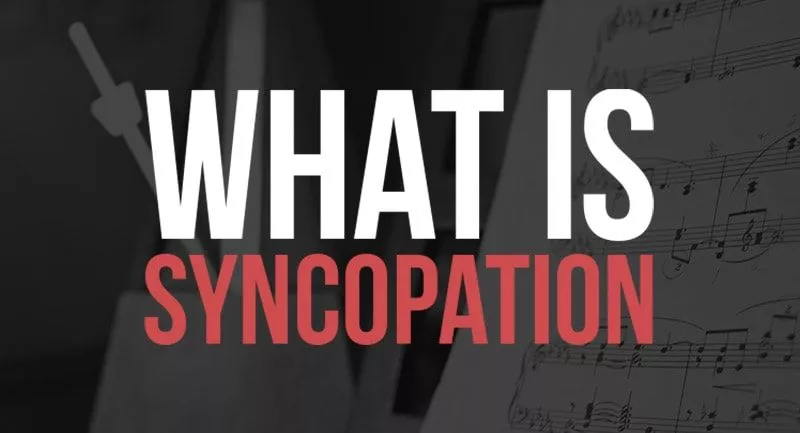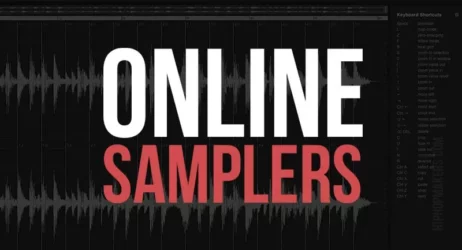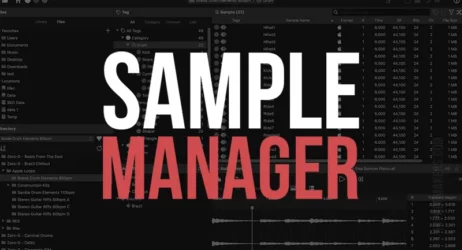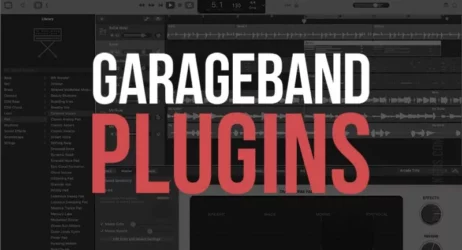This guide will answer what is syncopation in music, provide syncopation examples, explain how to identify syncopation, and answer other common questions.
What Is Syncopation In Music?
Syncopation in music means that a musical element has been displaced from its usual rhythm. In music, this usually means that a specific note is being played off the beat, either before or after it is expected, making the sound unexpected.

What Is Syncopation?
Syncopation is a disruption in the normal flow of rhythm. It can either be caused by shifting an accent to another note or playing notes that skip or disrupt the expected beats.
Syncopation is used to create a more interesting and engaging sound, and it’s often found at transitional points in songs. Syncopation can create an emotional effect, either to add tension or to create a playful attitude – and it usually communicates something about the music that follows it.
Many artists have used syncopation in music, creating popular songs that are still recognized today. It is common to liven up a song and can be done easily by shifting notes out of their regular position.
What Are The Types of Syncopation In Music?
There are several types of syncopation, each with a slightly different effect. This includes suspension syncopation, missed beat syncopation, even note syncopation, and off-beat syncopation.
1. Suspension Syncopation
Suspension syncopation sustains the tension of syncopation by holding over the beat, then shifting into the next measure. This creates a feeling that an important note is coming up.
2. Missed Beat Syncopation
Missed beat syncopation occurs when an expected note is skipped to create tension. As opposed to suspension syncopation, the beat is not held over, and the tension is not released.
3. Even Note Syncopation
Even note syncopation emphasizes a chord or note by placing a syncopated melody after it. In this case, the unexpected beat doesn’t create tension as much as emphasize the chord itself.
4. Off-beat Syncopation
Off-beat syncopation occurs when alternate notes are skipped, creating a playful and catchy rhythm. This type of syncopation is also referred to as “Swing.”
Which Music Genres Use Syncopation In Music?
Many types of music use syncopation, both of the standard variety and its sub-varieties.
Rock ‘n roll often uses syncopation in the guitar and drum parts. Soul music frequently uses syncopation to convey a happy or sad emotion. Jazz music often makes use of syncopation to make improvisations sound more fluid.
Syncopation can also be found in some classical pieces, most often in the form of a hemiola. A hemiola is when two measures of the triple meter are played against three measures of the duple meter. It’s also called a “time-switching” or “polyrhythmic” effect, and it’s often used in popular music to add a more exciting element.
What Are Examples of Syncopation?
Syncopation is not easy to describe, and it can be hard to grasp without hearing examples of syncopated rhythms. Here are a few different kinds of syncopation – listen carefully for these elements in music you know or hear:
1. An accented or unaccented note that falls on a beat or part of a beat before or after it is “supposed” to. An example of this is a famous song by The Police called “Every Breath You Take,” in which the song’s protagonist is singing about how he found love and dedicated himself to that person.
Syncopation is used in this song to communicate the protagonist’s obsessive feelings about his love. On the chorus, there are two instances of syncopation. The first occurs on the word breath, which falls before it is supposed to. The second occurs on the word you, returning with the expected rhythm.
2. Two notes are played one after the other, and the second note falls between beats. An example can be the song “Blue Monday” by New Order.
Syncopation is used in this song to make it more interesting and dynamic and allow the bass line to shine through. When you listen carefully, you’ll notice that most syncopation is on either unaccented beats or beats where another instrument takes over.
3. Two notes of different lengths played one after another. An example is the middle section of “I Wanna Be Sedated” by The Ramones.
The song uses syncopation to build up the anticipation and excitement of the song’s chorus when it kicks back into its regular rhythm.
4. A note that is unaccented but played in between beats. An example of this is in “Smooth Criminal” by Michael Jackson.
The syncopated rhythm in the chorus, which occurs on the word criminal, is used to communicate the tension in the lyrics.
5. Two notes played simultaneously, with neither falling on a beat. An example is The Beatles’ song “Come Together”.
As you listen to this song, notice how the syncopation occurs on the beat but is also unexpected. It adds a sense of playfulness to the song.
How Do You Know If Music Is Syncopated?
Syncopation is not always directly stated in music, and you may find it by the way a piece feels. If a song sounds “off,” it might be syncopated.
If there are lyrics, some words might become accented when they don’t seem like they should be (like saying “in-di-vid-u-al” with heavy stress on the penultimate syllable, when it’s usually said with equal emphasis on all of the syllables).
Pay attention to how you say a piece of music and see if that helps you identify syncopation.
An average person may find it difficult to identify syncopation without experience listening to music. However, this skill can be developed with study and practice.
What Is The Syncopation Quizlet?
The Syncopation Quizlet is a rhythmic device used by composers to create variety in their music. It is used to tweak the natural accent falling on a strong beat to make it syncopated to create an unexpected yet pleasing variation of the original rhythm.
The Quizlet is often used to allow the bass drum to shine through more prominently or add more depth to a song. In general, it gives drummers more parts and musicians the ability to add variety.
What Does A Syncopated Rhythm Sound Like?
Syncopated rhythms add a level of sound and excitement to music by disrupting the listener’s expectations. Listen carefully to various songs and see if you can identify syncopation in them.
Try focusing on the parts where the song sounds “off” to see if you can figure out why. You will be able to tell if music is syncopated by its sound, especially if you are experienced listening to music.
How Do You Use Syncopation In Music?
Syncopation can make a piece of music more interesting and dynamic. While it may seem like an odd or wrong rhythm, it’s just disrupting the natural rhythm that you may have subconsciously expected.
This can be done by accenting an off-beat or switching up the groupings of notes. It can also be done using syncopated rhythms, which are two different rhythmic values played simultaneously.
What Is The Difference Between Swing And Syncopation?
Swing and syncopation are often used together to make the music sound more exciting. While syncopation makes music more interesting, swing makes an entire piece more dynamic.
Swing is when musical notes are played at varying times compared to the song’s main rhythm. At first, it can be difficult to tell if something is swing or syncopated, but with experience, you can usually pick up on it.
Several types of swing rhythms are used in music, including swung triplets, swung duplets, and tresillo (three notes played against two). It’s also commonly known as the “shuffle” rhythm.
On the other hand, syncopation disrupts the natural rhythm of the main notes rather than an unevenness in those main notes. It’s sometimes referred to as a displaced accent.
Syncopation can also be found outside swing rhythms, and it can often be used to communicate tension or sound “off” in a musical piece.
Is Syncopation An Off The Beat Accent?
The answer is not so simple. Syncopation may seem like an off-the-beat accent, but it does differ, especially when you know what syncopation is.
Syncopation is an accent shifted to a week beat or sometimes off-beat. But it is something done deliberately to make the musical phrase sound off-beat.
An accent can make a piece of music more interesting and beautiful. It can turn a simple, monotonous melody into something more dynamic and beautiful.
While it may seem like an odd or wrong rhythm, it’s just disrupting the natural rhythm that you may have subconsciously expected.
Summary of Syncopation
A syncopation in music is the displacement of a musical element from its normal rhythm. The term usually refers to a note played before or after its expected time, creating an unexpected sound.
I hope you now have a better understanding of syncopation and how it applies to music.




